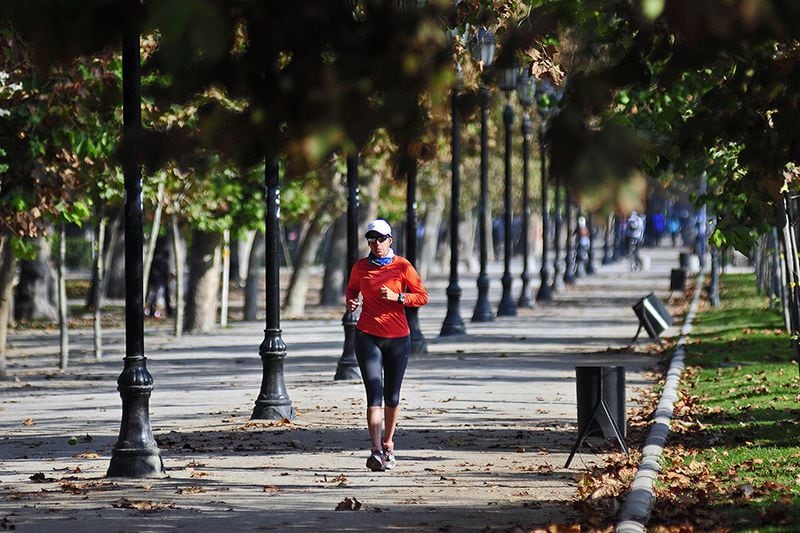The research involved 59,325 adults, who were followed for up to seven years to track their health indices.
Type 2 diabetes affects the body’s ability to use insulin to regulate blood sugar, leading to high levels that can cause heart problems, organ damage and blindness. Prediabetes means higher than normal blood sugar levels which can lead to full-blown diabetes.
There diabetes mellitus is a disease that affects how the body uses blood sugar. glucose, as explained by the Mayo Clinic is vital for health since it is an important source of energy for the cells that form muscles and tissues. It is also the main source of fuel for the brain.
The underlying cause of diabetes varies by type. But whatever the type, This can cause excess glucose in the blood. Very high blood sugar can lead to serious health problems.
Now, new research has revealed that being active could reduce the risk of type 2 diabetes even in people with a high genetic risk of developing the disease.
The most effective way to prevent diabetes according to the study
The study conducted by the university of sydney found this the highest levels of total physical activity, especially moderate-to-vigorous intensity physical activity had a strong association with a less risk of developing type 2 diabetes, conclusions which were published in the British Journal of Sports Medicine .

The researchers say that study shows higher levels of physical activity should be encouraged as an important strategy for preventing type 2 diabetes which in Chile has a prevalence of 12.3%, according to the latest national health survey, although doctors estimate that the figure today should be around 15%.
The study involved 59,325 adults of UK Biobank who wore accelerometers (wrist-worn activity trackers) at the start of the study and they were then followed for up to seven years to track health outcomes.
The British Biobank is a large-scale biomedical database and a research resource containing anonymised information on the health, lifestyle and genetics of half a million UK participants.
This included genetic markers associated with an increased risk of developing type 2 diabetes . People with a high genetic risk score had 2.4 times more likely to develop type 2 diabetes compared to those with a low genetic risk score.

The study showed that more than one hour of moderate-to-vigorous intensity physical activity per day was associated with a 74% lower risk of developing type 2 diabetes compared to participants who did less than 5 minutes of physical activity.
This was even when other factors were considered, including genetic risk.
Another compelling finding was that participants at high genetic risk, but who belonged to the most physically active category, they actually had a risk less likely to develop type 2 diabetes compared to those at low genetic risk but in the least active category.
The main author, Associate Professor Melody Ding of Charles Perkins Center and the Faculty of Medicine and Health, said it’s a statement Even if the role of genetics and physical activity in the development of type 2 diabetes is well established, until now, most data was self-reported and there was little evidence that genetic risk could be offset by physical activity.

“We can’t control our genetic risk and family history, but this finding provides promising and positive news that through an active lifestyle one can “fight” much of the excess risk of type 2 diabetes.
Associate Professor Ding says moderate-intensity physical activity describes movements that they make you sweat and leave you a little breathless such as brisk walking and gardening in general.
Examples of Vigorous-intensity physical activity includes running, aerobic dancing, bicycling uphill or at a fast pace, and heavy yard work, such as digging, any activities that make you short of breath or wheeze.
Study to help inform public health guidelines
Diabetes is a global public health problem. In 2021, there were 537 million adults living with diabetes worldwide.
The results also have strong personal meaning for Associate Professor Ding, whose father was recently diagnosed with type 2 diabetes in his 60s.
“The paternal part of the family has a history of type 2 diabetes, pThe result of the study is therefore extremely encouraging for me and my family. As I am already an active person, I now have extra motivation to maintain this active lifestyle,” says Associate Professor Ding.

“Our hope is that this study informs clinical and public health guidelines so it can help prevent chronic disease for healthcare professionals, organizations and the public.
“I am delighted to share the results of our research with a wide audience. to let people know that physical activity improves health, especially for people at high genetic risk . If you have a family history of type 2 diabetes, or even if you don’t, today is the time to start being physically active,” says doctoral candidate Mengyun (Susan) Luo, who conducted the study.
Source: Latercera
I am Robert Harris and I specialize in news media. My experience has been focused on sports journalism, particularly within the Rugby sector. I have written for various news websites in the past and currently work as an author for Athletistic, covering all things related to Rugby news.


